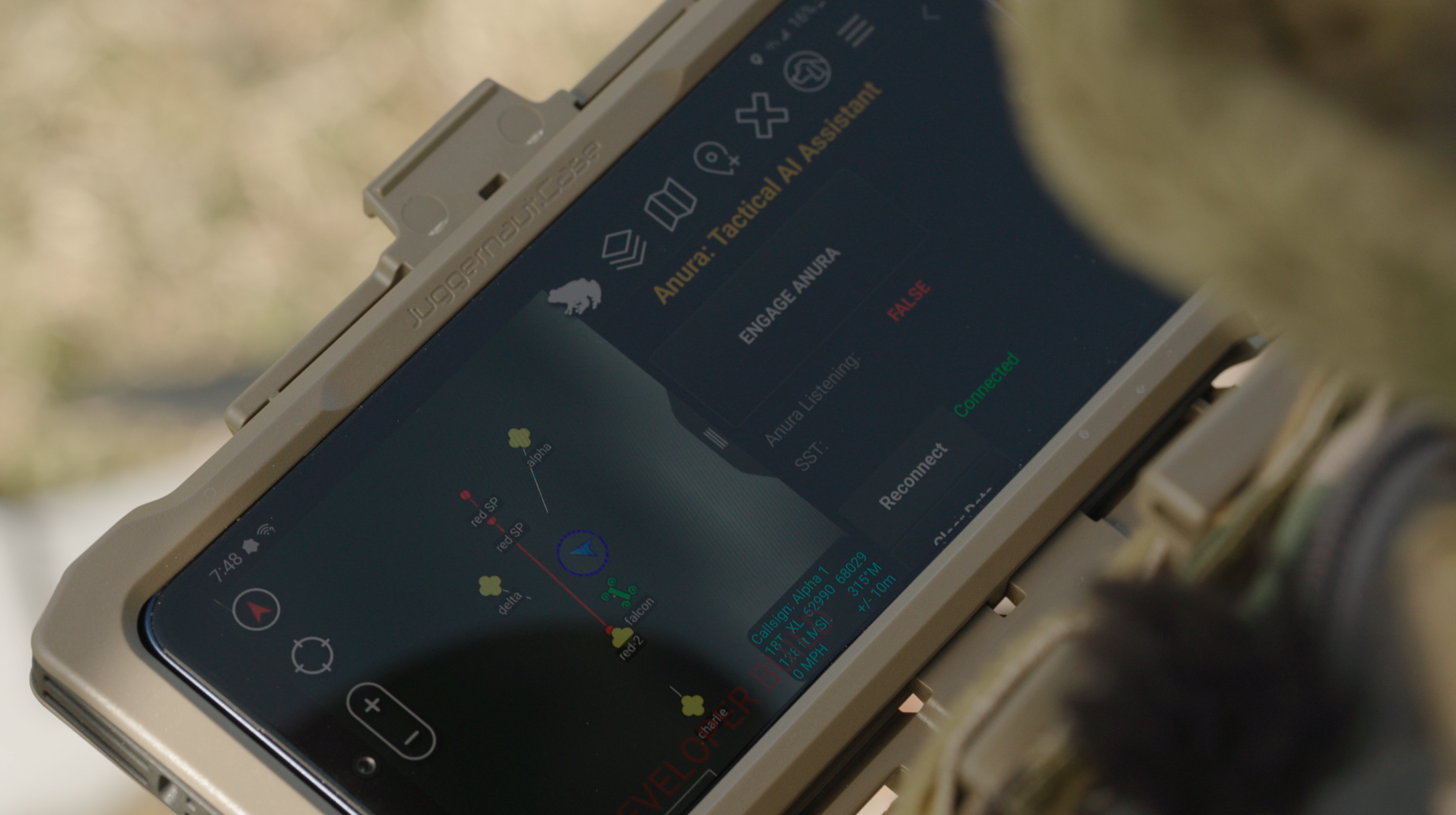Anura translates operator intent into autonomous action
Primordial Labs is developing the next-generation human-machine interface, Anura, to empower warfighters to be active collaborators, not passive observers, when teaming with uncrewed systems (UxS).
With Anura, operators can task robots like they would a human teammate by using natural language.
Our Approach
Our mission is to build human-centric autonomy that puts collaboration between the human and robot as priority number one. We believe the path to mass adoption of autonomous systems is to make the communication mechanism, not the robot itself, more human.
Anura: Natural Language Understanding + Platform-Agnostic Autonomy
Anura blends natural language understanding with an embodied autonomous agent to enable voice-command autonomy capabilities for uncrewed systems, battlefield management systems, and more.
Anura leverages a conversational human-machine interface (C-HMI) that translates verbal, mission-type orders from natural language to complex autonomous platform and sensor behaviors. It does this by extracting and distilling the operator’s intent with respect to the current mission context.
Natural Language Understanding
Platform-Agnostic Autonomy
Anura’s platform-agnostic autonomous agent controls platforms, payloads, and sensors based on the operator’s intent extracted by the C-HMI. This allows Anura to take action in the real world, whether it’s manipulating software or a physical platform.

Why Anura?
Maximize your autonomy stack
Integrate with existing equipment
Up-skill existing on-board autonomy
Avoid vendor-lock
Empower the warfighter
Reduce cognitive burden
Democratize access to UxS
Provide heads-up control in the field
Anura makes communicating with robots more human by leveraging natural language
Use Case 1:
Uncrewed System Command & Control
Anura enables warfighters to employ uncrewed systems (UxS) with minimal distractions. Users can task drones via simple, direct voice commands or using higher-level, mission-type orders.
Anura does not listen for key words or require memorizing a script. Instead, Anura extracts and distills the operator’s intent and translates that into autonomous actions for the platform to execute.
Use Case 2:
Human-Machine Teaming
As the size and complexity of human-machine integrated formations grows, single operators will be responsible for commanding multiple robots on the battlefield simultaneously.
Using Anura, operators can task platforms individually via call-sign (e.g., “Falcon”), or as a team (e.g., “Team Alpha”), using natural language.
Teams can be formations of heterogeneous platforms in the same or different domains.
Battlefield Management Systems
Use Case 3:
Anura is not limited to the command and control of uncrewed systems.
Operators and analysts can use Anura to verbally query databases using high-level intent and control various graphical displays.
Anura’s conversational interface and powerful AI engine can be used to make complex data management and operations faster, more intuitive, and more dynamic.











